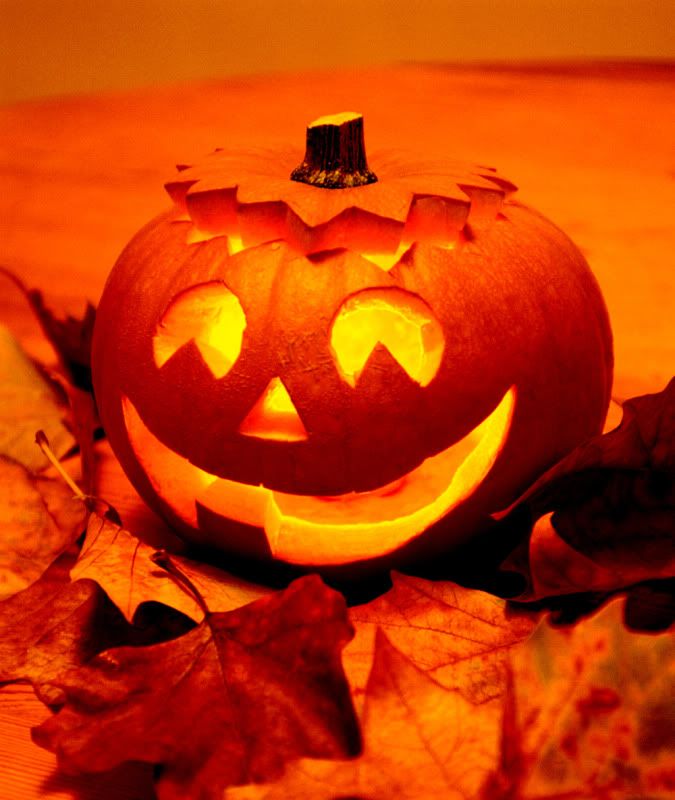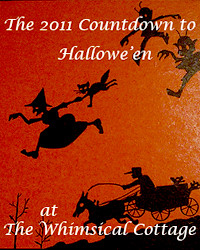Saturday, December 17, 2011
Great idea for broken lights
I dropped a bag full of our broken twinklies, and the collection box was right up front.
Here's more information on the charity: http://www.lightsforlifeinc.com/
Very cool.
Friday, December 9, 2011
My favorite chair in the world
It's a Morris chair from the early 20th century. I love the carved lions and the claw feet. It has new upholstery, because the old was tattered, but that doesn't detract from it at all for me.



Wednesday, November 23, 2011
Happy Thanksgiving!
All is safely gathered in, ere the winter storms begin.
I always loved this hymn, a holdover from my church upbringing. Thanksgiving is a special holiday to me, and it's one I appreciate. I hate that it gets buried in the ever-lengthening run up to Christmas.
It's so important to stop, breathe, and give thanks.
Friday, November 18, 2011
Lovely cashmere

My aunt sent me this lovely cashmere jacket. It is sooooo soft. The pictures don't do it justice. It's like a blazer. I want to wear it, but I dread risking dirt or stains! I will have to be careful.

Saturday, November 5, 2011
Oh gracious
Here are some pictures from our Harry Potter and the Deathly Hallows yard:
Dorm room

Potions class

The graveyard

Astoria Greengrass with Professor Trelawney

The Grim!

Monday, October 31, 2011
Halloween History Countdown - Day 31
Our Halloween theme this year was Harry Potter and the Deathly Hallows. This is Hogsmeade and the Shrieking Shack (at a distance):

I was Professor Trelawny, complete with a grim at the bottom of the tea cup. More pictures later - our yard was awesome.
Sunday, October 30, 2011
Halloween History Countdown - Day 30

Here's one of my favorite spooky legends, with more information from Snopes.com:
Bloody Mary, Bloody Mary, Bloody Mary!
Legend: Chanting "Bloody Mary!" three times in front of a candlelit mirror will summon a vengeful spirit.
Origins: The research into Bloody Mary goes Come to me . . . back to 1978, when folklorist Janet Langlois published her essay on the legend. Belief in summoning the mirror-witch was even at that time widespread throughout the U.S.
Mary is summoned whenever squealing girls get together for a sleepover, but boys have been known to call on her too. (The 'Bloody Mary' legend was common when I was a kid in the early 1970s. We typically performed the "ritual" in bathrooms, because the bathrooms of our suburban homes had large mirrors and were easily darkened even during the day since they had no windows. A familiar 'Bloody Mary' story was one about a girl who supposedly ended her incantation with a spiteful "I don't believe in Mary Worth," then tripped over the doorjamb while exiting the bathroom and broke her
hip.)
Mary is said to be a witch who was executed a hundred years ago for plying the black arts, or a woman of more modern times who died in a local car accident in which her face was hideously mutilated.
It's possible these "mirror witch" games have their roots in oldtime divining rituals involving unmarried girls and future husbands. There are a number of variations of these divinations, some involving chanting a rhyme in a darkened room on a special night and then quickly looking in the mirror to catch a glimpse of the bridegroom-to-be.
The concept of mirrors as portals between this world and the realm of spirits shows up in other beliefs, namely those surrounding funerals. It was common practice to cover mirrors in a house where a death had occurred until the body was taken for burial. (Back in the days before funeral homes, corpses were washed by the deceased's relatives, dressed in their funeral finery, and laid out in coffins in the front parlor. Consequently, the dead would be in the house for days.) It was believed if the dear departed caught a glimpse of himself in a mirror, his ghost would remain in the house because the mirror would trap his spirit.
Saturday, October 29, 2011
Halloween History Countdown - Day 29

I'm posting early because tonight I'll be attending The Denver Witches' Ball! This is the first time I've been, and I'm pretty excited.
From the BBC Wiki:
Black Cats in Every Culture
"One of the earliest associations of black cats with bad luck perhaps comes from ancient Babylonian and Hebrew mythologies. These myths compare the black cat, coiled in a circle as it dozes on the hearth, to a serpent. The serpent in most cultures was considered a purveyor of evils and misfortune.
The Celts thought black cats were reincarnated beings who were able to divine the future and the Normans believed that if a black cat crossed your path in the moonlight, you would die in an epidemic. During the Middle Ages the Germans believed that if a black cat jumped on the bed of a sick person it meant death was approaching and in Finland, black cats were thought to carry the souls of the dead to the other world."
Friday, October 28, 2011
Halloween History Countdown - Day 28

Another spooky word derivation for this 28th day of the month!
From Weird! The Complete Book of Halloween Words by Peter R. Limburg
"Gruesome comes from the Scottish verb, grue, that meant 'to feel horror' or 'to shudder'. Grue was often spelled grow, for people could not agree on how it should be spelled.
At some point during the Middle Ages, the ending some was tacked on to make an adjective. But gruesome remained a provincial word until Sir Walter Scott used it in his novel Old Mortality in 1816. He spelled it grewsome. The modern spelling did not take hold until after 1850."
Thursday, October 27, 2011
Halloween History Countdown - Day 27
On this day (10/31), The Adventures of Sherlock Holmes, by Arthur Conan Doyle, is published. The book was the first collection of Holmes stories, which Conan Doyle had been publishing in magazines since 1887.
Wednesday, October 26, 2011
Halloween History Countdown - Day 26
October 31, 1926
Houdini is dead
Harry Houdini, the most celebrated magician and escape artist of the 20th century, dies of peritonitis in a Detroit hospital. Twelve days before, Houdini had been talking to a group of students after a lecture in Montreal when he commented on the strength of his stomach muscles and their ability to withstand hard blows. Suddenly, one of the students punched Houdini twice in the stomach. The magician hadn't had time to prepare, and the blows ruptured his appendix. He fell ill on the train to Detroit, and, after performing one last time, was hospitalized. Doctors operated on him, but to no avail. The burst appendix poisoned his system, and on October 31 he died."
Tuesday, October 25, 2011
Halloween History Countdown - Day 25
From the History Channel website:
On October 31,1517, the priest and scholar Martin Luther approached the door of the Castle Church in Wittenberg, Germany, and nailed a piece of paper to it containing the 95 revolutionary opinions that would begin the Protestant Reformation.
Monday, October 24, 2011
Halloween History Countdown - Day 24
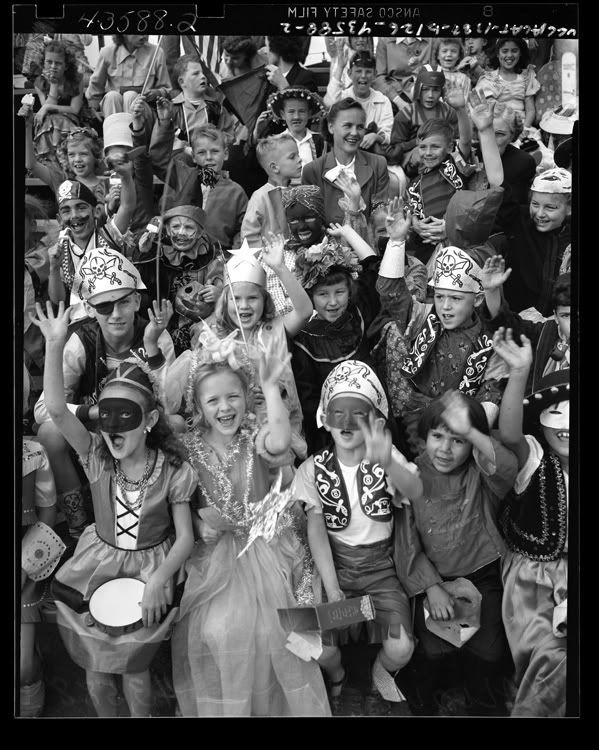 (Anaheim, 1948)
(Anaheim, 1948)Historical Halloween Fact
This one is from the Census site!
In the United States, the first official citywide Halloween celebration occurred in Anoka, Minn., in 1921.
Sunday, October 23, 2011
Halloween History Countdown - Day 23

Let's do some spooky linguistics for a change.
From Weird! The Complete Book of Halloween Words
Grave comes from the Old English word grafan, "to dig", and refers to the pit or trench that is dug in the ground to hold a corpse. Yard comes from the Old English geard, meaning "fence" or "dwelling".
Cemetery comes from the Latin term caemeterium, but the Romans got that word from the Greek koimeterion, which literally means a dormitory.
Saturday, October 22, 2011
Halloween History Countdown - Day 22

From Bannatyne, continuing with Appalachian lore:
"Because the German backwoodsmen brought the witchlore of the Continent instead of England - that of Europe being more vivid and sensational of the two - there was a much larger proportion of sabbath meeting tales in the region.
Take, for example, the backwoods tale of a man who made the mistake of living with a woman and her daughter, known to be witches. He watched them prepare for their sabbath meeting and tried to follow them by duplicating their rituals. They smeared themselves with grease from a dish, chanted a rhyme, mounted black calves, and rode away through the night to a sabbath full of dancing and singing.
By 1900, accounts of witch sabbaths in the Appalachians had grown curiously American - no more the drunkenness or infant murdering of medieval European sabbaths; witches in Appalachia simply had a good old time. The following sabbath description is from a "Jack" tale, "Jack and the Witches", and reads more like a Halloween play-party than a sacrilegious feast:
Well, inside that house it was all lit up, and the fastest music you ever heard was goin', and the witches were laughin' and shoutin' and dancin' up and down and around and around, circlin' first one way and then another, and swingin' and sashayin' across the middle - cuttin' all kinds of shines! Jack leaned back against the wall and had him a time watchin' all that.
Heh. Yeah, "had a time watchin' all that" is one heck of a euphemism, if'n ya ask me.
Friday, October 21, 2011
Halloween History Countdown - Day 21
"The Scottish-Irish and German Influences in Appalachia
The Scottish-Irish formed a large group of frontiersmen who in the early 1800's pushed from the eastern seaboard into the wilderness west of the Allegheny Mountains. There they met up with German Protestants, carving a similar path from their original settlements in Pennsylvania and New York State. Mountain folklore was influenced by these settlers, and theirs was a particularly hearty cultural stew.
In the mountainous backwoods, remnants of old world Halloween could be found in the prevailing general superstitions... But the most vivid element of Halloween mythology in this region was witchcraft: the Scots' heritage of spirit lore in tandem with the German witch mythology produced an especially potent combination.
Witches in 19th-century Appalachia were as important to folk life as they had been to the fearful colonials. Other parts of the world may have entered the Age of Reason, but this region of America held fast to its occult beliefs and kept active a netherworld inhabited by mountain witches. The witch was to become an important symbol of modern Halloween, and her folk life in the backwoods of Appalachia is an interesting chapter in her evolution."
More on Appalachian witches tomorrow!
Thursday, October 20, 2011
Halloween History Countdown - Day 20
"Famine in Ireland in 1820, and another more devastating famine in 1846, sent thousands of Irish Catholics looking for new homes in America. It was a vast immigration: between 1825 and 1845, 700,000 Irish Catholics emigrated to North America; in just the seven famine years between 1847 and 1954, 300,000 entered the United States
Like the Catholics who settled here in colonial times, the Irish celebrated All Saints' and All Souls' Days. But as direct descendents of the Celtic culture, the also preserved elements of their pagan Samhain rituals. The Irish customs reinforced the embryonic American Halloween tradition and added lush details to its symbols."
Wednesday, October 19, 2011
Halloween History Countdown - Day 19
"Young men and boys in America were especially fond of practical jokes and pranks, and the emergence of Halloween as a holiday for mischief must have been a cause for joy. Pranks of all sorts were popular. Boys would put a man's gate in his tree or lift his wagon to the roof of the barn. Pranksters blocked roads with logs, rail fences, and bails of hay. They built a pulley advice from a string and a button that made rapping noises on a window while they hid, watching the maddening effects on their victim. Bags of flour were poised over doors to plummet on the first person through the doorway; sty gates disappeared, allowing pigs and cows to escape into the street; rocking chairs hung from the trees."
I like the pulley. That's brilliant.
Tuesday, October 18, 2011

Since we're talking about pranks and mischief, I thought I'd post the work of our adorably devious squirrels' pranks on my pumpkin.
Pranks and Mischief, from the Bannatyne book:
Come forth ye lass and trousered kid,
From prisoned mischief raise the lid,
And lift it good and high.
---from John Kendrick Bangs' 19th-century poem "Halloween"
"Goblins, imps, fairies, and trolls were thought to do a lot of mischief on Halloween in the British Isles. Halloween was the night the spirits were out; farmers bolted their doors and avoided walking alone late at night. For centuries, anonymous mischief was expected on October 31.
Americans had a long tradition of Halloween-related mischief-making to live up to. The most direct antecedent was the celebration of Guy Fawkes Day. Mischief Night preceded Guys Fawkes Day in England and bears a great resemblance to the Mischief Night that preceded American Halloween in many regions.
Monday, October 17, 2011
Halloween History Countdown - Day 17
From my favorite British school site chock full o' facts:
"In England the day of fires became November 5th (Bonfire Night), the anniversary of the Gunpowder plot of 1605, but its closeness to Hallowe'en is more than a coincidence. Hallowe'en and Bonfire Night have a common origin they both originated from pagan times, when the evil spirits of darkness had to be driven away with noise and fire."
Sunday, October 16, 2011
Halloween History Countdown - Day 16

From The Holiday Spot
According to an old English folk belief, you will invite bad luck into your home if you allow a fire to burnout on Halloween. To remedy the situation, the fire must be rekindled by a lighted sod brought from the home of a priest.
Saturday, October 15, 2011
Halloween History Countdown - Day 15

From a UK Halloween history page:
"In Lancashire, 'Lating' or 'Lighting the witches' was an important Hallowe'en custom. People would carry candles from eleven to midnight. If the candles burned steadily the carriers were safe for the season, but if the witches blew them out, the omen was bad indeed."
I guess you hope for a calm night, eh?
Friday, October 14, 2011
Halloween History Countdown - Day 14
From History of Halloween.net
"Some believe if you catch a snail on Halloween night and lock it in a flat dish you will see the first letter of your sweetheart’s name in the morning.
Another one says that if a girl puts fresh rosemary and a silver coin under her pillow on Halloween, she will see her future husband in a dream.
Girls who carry a lamp to a spring of water on this night are said to be able to see their future husband in the reflection.
Additionally, carrying a broken egg in a glass to a spring of water during the day can not only see their future husband by mixing some of the spring water into the glass, but she can also see a glimpse of her future children."
Thursday, October 13, 2011
Halloween History Countdown - Day 13

Still quoting from the Bannatyne book, because it is cool.
"Many American ghost stories evolved from actual superstitions and rituals practiced by those in the British Isles on Halloween. The accounts of a "dumb supper" that follow were found in several states in the 19th century. The dumb supper was a divination ritual performed by girls on May Day and Halloween, these being the two ideal forecasting dates in the old pagan tradition. Unmarried women cooked a meal in complete silence, then ate and waited for the ghost of their future husband to come into the room. Women in Ireland, Scotland, and England took this story very seriously. So too did Americans. A woman in Maryland relates the story of her own dumb supper:
...we did everything with oil at that time, no electricity, and all the lights were low, and we set there by ourselves, nobody but me and this girl, just waiting for people to come in. Just at twelve o'clock, the wind commenced to blow, and it blew a gale, and the lights were flickering, and we were both scared, expecting something to come in, and Pap had an old horse that he used and she come and poked her head in the door, and I swear, we like to tore that house down getting out of there. We like to broke the door down."
Ah, divination rituals and spooking yourself to hysteria - fine Halloween traditions!
Wednesday, October 12, 2011
Halloween History Countdown - Day 12
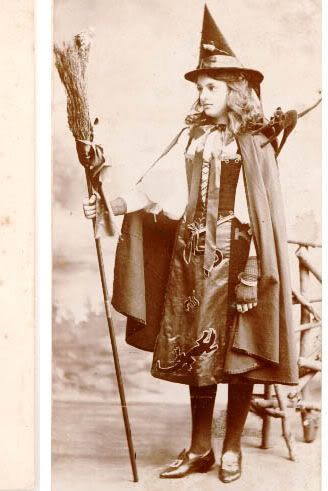 From Halloween: An American Holiday, An American History by Lesley Pratt Bannatyne:
From Halloween: An American Holiday, An American History by Lesley Pratt Bannatyne:"American harvest get-togethers called play parties were a more likely precursor to American Halloween.
The play party was a public, nondenominational event, and whole families attended. It could be held at any time, but the first of the season as usually held in the early dark of late autumn. The apple harvest had just ended and both apples and nuts were plentiful for play party food. Ghost stories were an integral part of this autumn celebration, and tales of the ancestral dead were told and retold by elders to a spellbound crowd. Whereas in the early colonial days divinations were done privately and in secret, communities now gathered together to play fortunetelling games. Dancing, singing, stomping, and cheering went on well into the night - if not the next morning - and some later play parties featured a school pageant of sorts."
Tuesday, October 11, 2011
Halloween History Countdown - Day 11
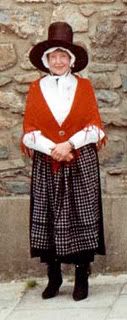
Day 10, and let's go to Wales then, cariad.
From: http://en.wikipedia.org/wiki/Calan_Gaeaf and http://www.mysteriesofwales.com/customs.html
"Calan Gaeaf is the name for the first day of winter in Wales. Winter Eve is called Nos Calan Gaeaf or Ysbrydnos. It's the time of the year when spirits come to life.
Families lit bonfires on Calan Gaeaf. Stones would be placed in the fire with the names of the family members on them. The superstition was that each person whose stone was missing the following morning would die within the year.
There would also be tales of a spirit of a black sow with no tail which is called yr Hwch Ddu Gwta in Welsh. It was known that this black sow would be present in the area on Winter Eve with a headless woman."
Monday, October 10, 2011
Halloween History Countdown - Day 10

From The Complete Victorian Halloween page:
"The tradition of 'trick-or-treating' lies in the English traditions of early All Souls' Day parades. During the festivities, the poor would beg for food, and be given pastries called 'soul cakes' in return for their promise to pray for a family's dead relatives. The distribution of soul cakes was encouraged by the church as a way to replace the ancient practice of leaving food and wine for roaming spirits. The practice was referred to as 'going a-souling' and was eventually taken up by children who would visit the houses in their neighborhood and be given ale, food, and money."
Sunday, October 9, 2011
Halloween History Countdown - Day 9
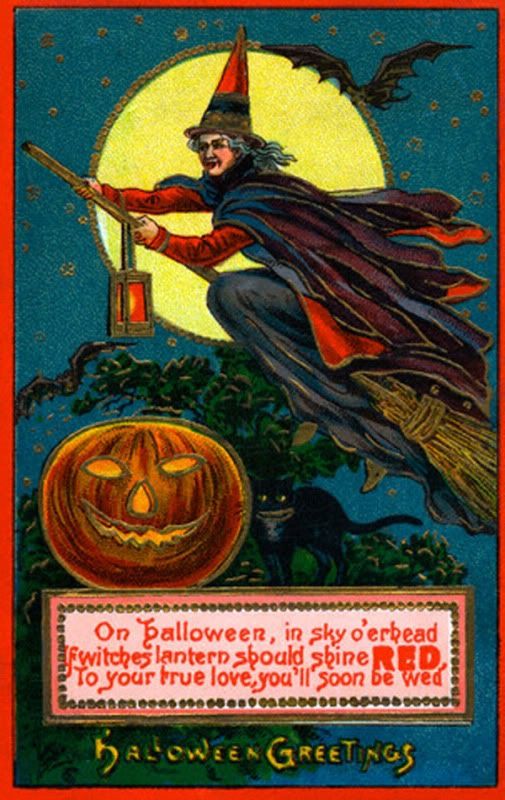
From the History Channel:
People have been making jack o'lanterns at Halloween for centuries. The practice originated from an Irish myth about a man nicknamed "Stingy Jack."
According to the story, Stingy Jack invited the Devil to have a drink with him. True to his name, Stingy Jack didn't want to pay for his drink, so he convinced the Devil to turn himself into a coin that Jack could use to buy their drinks. Once the Devil did so, Jack decided to keep the money and put it into his pocket next to a silver cross, which prevented the Devil from changing back into his original form.
Jack eventually freed the Devil, under the condition that he would not bother Jack for one year and that, should Jack die, he would not claim his soul. The next year, Jack again tricked the Devil into climbing into a tree to pick a piece of fruit. While he was up in the tree, Jack carved a sign of the cross into the tree's bark so that the Devil could not come down until the Devil promised Jack not to bother him for ten more years.
Soon after, Jack died. As the legend goes, God would not allow such an unsavory figure into heaven. The Devil, upset by the trick Jack had played on him and keeping his word not to claim his soul, would not allow Jack into hell. He sent Jack off into the dark night with only a burning coal to light his way. Jack put the coal into a carved-out turnip and has been roaming the Earth with ever since. The Irish began to refer to this ghostly figure as "Jack of the Lantern," and then, simply "Jack O'Lantern."
In Ireland and Scotland, people began to make their own versions of Jack's lanterns by carving scary faces into turnips or potatoes and placing them into windows or near doors to frighten away Stingy Jack and other wandering evil spirits. In England, large beets are used. Immigrants from these countries brought the jack o'lantern tradition with them when they came to the United States. They soon found that pumpkins, a fruit native to America, make perfect jack o'lanterns.
Saturday, October 8, 2011
Halloween History Countdown - Day 8
Fancy dresses described; or, What to wear at fancy balls by Ardern Holt (1887)
Read online here: http://www.archive.org/stream/cu31924029922451#page/n3/mode/2up
If you ever want to dress up as a Queen Bee, Belle of the Racecourse, a Canadian Snow-Wreath, an Oarswoman, or a Golden Hen, this is the reference for you.
It's actually a gorgeous book, with full color illustrations like this one for "witch".
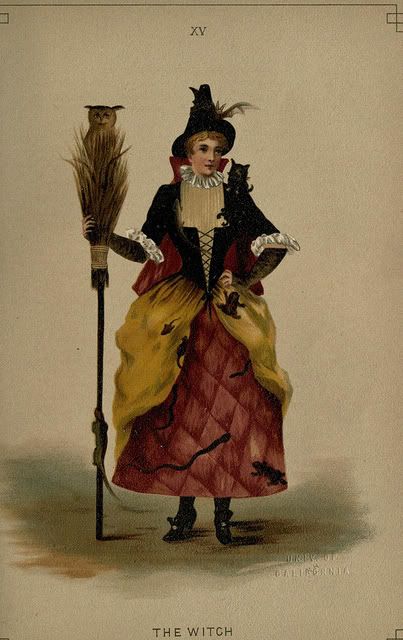
Which costume would you pick? I'm partial to their description of Ophelia, myself.
Friday, October 7, 2011
Halloween History Countdown - Day 7
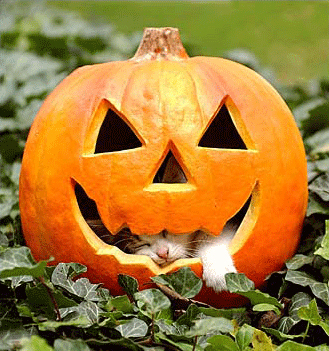
From Pumpkin Masters Halloween Facts page:
Pumpkins are a fruit that originated in Central America. The name "pumpkin" comes from the Greek word "pepon," meaning a large melon.
Thursday, October 6, 2011
Halloween History Countdown - Day 6
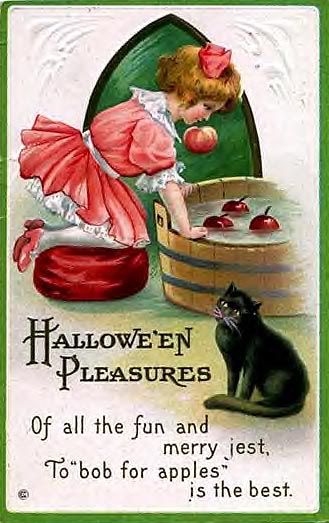
This one goes along with the festival of Pomona as mentioned yesterday.
From here, but I read this almost word for word in a book called Halloween: An American Holiday, An American History by Lesley Bannatyne:
"Hallowe'en was also sometimes called Snap Apple Night, in England. A game called snap apple was played where apples were suspended on a long piece of string. Contestants had to try an bite the apple without using their hands. A variation of the game was to fix an apple and a lighted candle at opposite ends of a stick suspended horizontally and to swing the stick round. The object was to catch the apple between the teeth whilst avoiding the candle."
Wednesday, October 5, 2011
Halloween History Countdown - Day 5

From History of Halloween:
"Two Roman festivals were combined with Samhain. One was called Feralia, a day in late October when the Romans commemorated the passing of the dead.
The second honored Pomona, the Roman Goddess of fruit and trees. Pomona’s symbol is the apple and was incorporated into the celebration of Samhain. This probably explains the modern day tradition of bobbing for apples, practiced on Halloween."
Tuesday, October 4, 2011
Halloween History Countdown - Day 4

From the Wikipedia article:
"Hop-tu-Naa is a Celtic festival celebrated in the Isle of Man on 31 October. Predating Halloween, it is the celebration of the original New Year's Eve (Oie Houney). The term is Manx Gaelic in origin, deriving from Shogh ta’n Oie, meaning "this is the night". Hogmanay, which is the Scottish New Year, comes from the same root.
For Hop-tu-Naa children dress up as scary beings and go from house to house with the hope of being given sweets or money, as elsewhere. However the children carry turnips rather than pumpkins and sing an Anglicized version of Jinnie the Witch. The changeover from turnips to pumpkins has also happened in Scotland, where the similar practice is called "guising".
In older times children would have also brought the stumps of turnips with them and batter the doors of those who refused to give them any money! (An ancient form of trick or treat, however this practice appears to have died out.)"
More info (and, heh, what looks like the source of the Wikipedia article) from the BBC on Hop-tu-naa!
Monday, October 3, 2011
Halloween History Countdown - Day 3
Sunday, October 2, 2011
Halloween History Countdown - Day 2

Some interesting information from Heretical History of Halloween about Samhain:
"Samhain (also spelled samain, samuin or samhuinn) is a Gaelic word signifying the end of summer. A suggested etymology is sam 'summer' (as in samrad, the Old Irish word for summer) and fuin 'end'. The term was brought to Gaelic-speaking areas of Scotland along with the Irish Scots who settled there.
Saturday, October 1, 2011
Halloween History Countdown
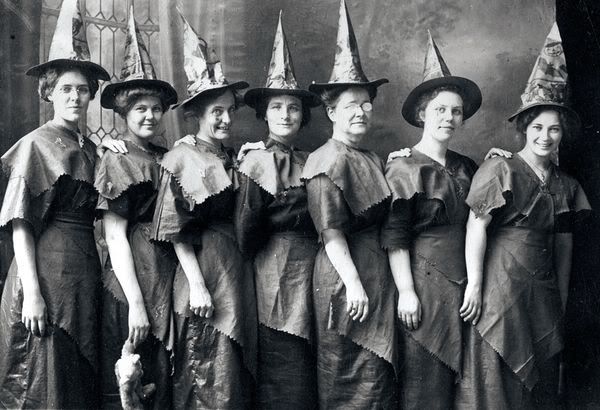
Every day this month, I'll be sharing historical Halloween facts, spooky word derivations, and glimpses of Halloweens past.
From Weird! The Complete Book of Halloween Words:
"October is the tenth month of our year. But the word October comes from the Latin octobris mensis meaning 'eighth month'. This is because the old Roman year began in March.
The Anglo-Saxons called October Winterfylleth (winter full moon) because they considered winter began with the October full moon, one of the turning points of the year."
Friday, September 30, 2011
Wednesday, September 28, 2011
Crafts
At least I have some time to plan!
To get off this stressful topic, here is another pretty picture.

Monday, September 26, 2011
Saturday, September 24, 2011
Pirate Ghosts

A glimpse of Halloweens past - these are my cheese cloth pirate ghosts from our 2006 pirate theme. I made them with crumpled up plastic bags for the heads and formed the cheese cloth (soaked in a glue-water mixture) over two-liter cola bottles. I did the forming and drying in the shower, so the fabric dried on the shower floor to make the floating effect. I cut out black felt for the mouths and eye(patches).
We might do our pirate theme again next year.
Thursday, September 22, 2011
Crows
Sunday, September 18, 2011
Alas...
My camera has gone missing.
I cannot, therefore, show off the fantabulous Dracula/steampunk/HP/whatever-I-want-it-to-be cape I got at the thrift store last night. We found some great things last night, in addition to Halloween treats. Mr. Viv found more collectible vinyl. Bless him. And I found the large print books for elder relatives that make such nice Christmas presents. I am trying to think ahead.
Now that the thrift stores are in their full Halloween costume glory, I'll be looking for vintage items. I found this adorable 1950's dress in the costume section of one last year. It was half price, so I bought it for less than $5. Amazing.
Saturday, September 17, 2011
Friday, September 16, 2011
A new show
http://www.cwtv.com/shows/the-secret-circle
Wednesday, September 14, 2011
It's fall!
I need some candy corn. And a pumpkin. And maybe a scarecrow while I'm at it.
Saturday, September 3, 2011
Falling
I was wondering today what it is about fall that makes me feel so much more spiritual. It's as if the dying of the year gives birth to a longing to celebrate the season. Tomorrow I am going outside with my candles and incense and Tarot cards and I think I will try out my little cauldron for the first time. We'll see how it goes.
Thursday, September 1, 2011
September
I'm not sure how I zoomed through the year to get here, but here I am.
I am looking forward to changing leaves, cooler temperatures, and, of course, Halloween.
